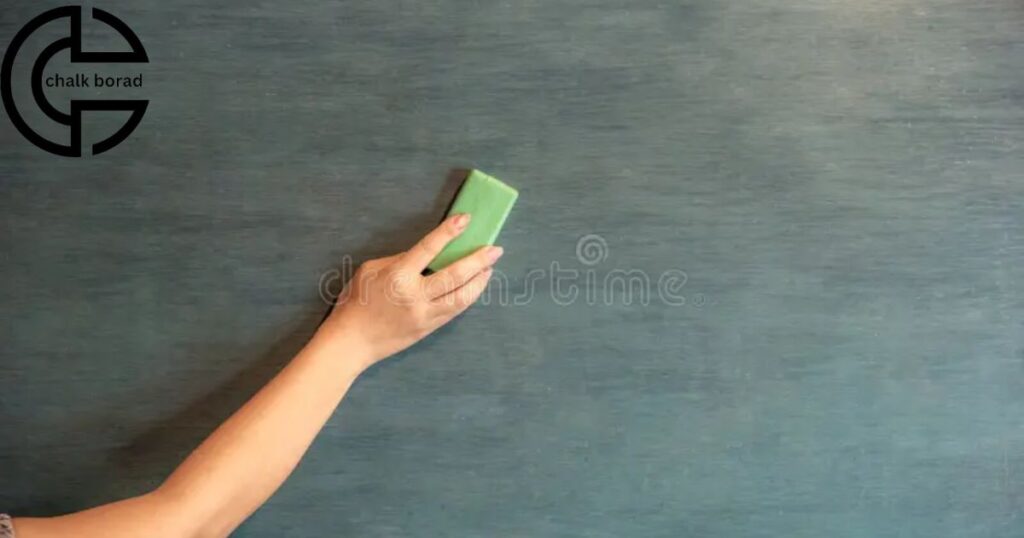Remove chalkboard paint involves using a paint stripper. Sandpaper to eliminate the existing chalkboard coating from surfaces. Careful application of the chosen method helps restore the original surface by stripping away the chalkboard layer.
Peeling away it is like revealing a hidden narrative beneath your walls, a canvas longing for a fresh chapter. Have you ever wondered about how to remove Chalkboard Paint? This transformative process transcends a mere paint job offering a unique opportunity to breathe new life into your space.
Removing this involves using effective techniques like applying a paint stripper or employing sandpaper to eliminate the existing coating. The process requires careful consideration to avoid damage to the underlying surface. As the chalkboard layer is stripped away, it reveals the original canvas, ready for a fresh start. Always follow recommended safety measures and product instructions during this transformation.
Necessary Tools for Removing Chalkboard Paint
| Tool | Description | Purpose |
|---|---|---|
| 1. Paint Stripper | Chemical solution designed for paint removal. | Breaks down and softens chalkboard paint for easy removal. |
| 2. Scraper | Sturdy handheld tool with a flat blade. | Scrapes off softened paint from the surface. |
| 3. Sandpaper | Abrasive paper available in various grits. | Smoothens the surface after paint removal. |
| 4. Protective Gear | Safety glasses, gloves, and a mask. | Ensures safety during the paint removal process. |
| 5. Drop Cloth | Large protective cloth or plastic sheet. | Covers and protects the surrounding area from debris. |
| 6. Plastic Sheeting | Thick plastic sheeting or painter’s plastic. | Used to cover and protect large surfaces or furniture. |
| 7. Bucket and Sponge | Water, mild detergent, and a sponge. | Cleans the surface after paint removal. |
| 8. Rags or Towels | Absorbent cloths for cleaning and wiping. | Helps in wiping away excess water and cleaning residues. |
| 9. Painter’s Tape | Blue painter’s tape or masking tape. | Protects adjacent surfaces from unintentional damage. |
| 10. Putty Knife | Flat-bladed tool with a flexible edge. | Useful for removing small, stubborn paint spots. |
Make sure to follow safety guidelines and product instructions when using these tools, especially when working with chemical paint strippers. Always test a small, inconspicuous area first, and proceed with caution.
Simple steps erase chalkboard paint

It starts with wiping a soft cloth or chalkboard. Wet the cloth with water and clean the chalkboard paint thoroughly. This helps lift and loosen chalk particles for easy removal. If water alone is not enough, mix a small amount of mild detergent with water and use the solution to clean the paint. Wipe the surface of the chalkboard with a clean, damp cloth to ensure that soap residue is removed.
Consider using a chalkboard cleaner for stubborn chalk marks or stains. Apply a small amount to a cloth and gently rub the stained area. Avoid using abrasive materials or harsh chemicals. With these simple steps, you can keep your chalkboard paint clean and ready for new creations.
Surface Preparation
Start by cleaning the chalkboard surface with a damp cloth to remove loose particles and dust ensuring a smooth erasing process.
Gentle Erasing Technique
Use a chalkboard eraser and dry sponge to gently erase the markings avoiding damage to the underlying surface.
Stubborn Stains Solution
For persistent stains apply a mixture of water and mild soap providing an effective solution to refresh the chalkboard for your creative endeavors.
Effective ways remove chalkboard paint
Effectively remove chalkboard paint by using a reliable paint stripper as directed. Gently scrape or sand the soft paint layers to reveal the original surface. Ensure efficient removal with minimal damage. This leaves you with a fresh canvas for your creative projects.
Application of Paint

Stripper Initiate the removal process by applying a high quality paint stripper specifically designed for chalkboard paint. Ensure thorough coverage following the product guidelines.
Gentle Layer Removal
After allowing the paint stripper to work, employ a scraper or sandpaper to gently remove chalkboard paint of softened layers. Exercise caution to prevent damage to the underlying surface.
Surface Refinement
Complete the removal by refining the surface with a fine grit sandpaper leaving you with a clean and renewed canvas ready for new projects.
Safe techniques remove chalkboard paint
Safely removing this involves using effective techniques. Which minimizes potential harm to both surfaces and individuals. To ensure personal safety opt for nontoxic paint strippers and wear protective gear such as gloves and goggles. Gently use a scraper and fine sandpaper to minimize the risk of surface damage. It is creating a secure and controlled environment for the removal process.
Stay Safe with Good Ventilation

Before you start make sure the area is well ventilated. So you do not breathe in anything harmful. Put on gloves and goggles to protect yourself during the paint removal.
Use Non-Toxic Paint Strippers
Choose paint strippers that won’t harm you or the environment. Follow the instructions carefully to apply them safely and effectively.
Gentle Methods for Surface Care
When removing the paint, be gentle with a scraper or fine sandpaper to avoid messing up the underlying surface. These simple steps keep you and your space safe throughout the chalkboard paint removal process.
Preparing Chalkboard Surface Properly

Preparing chalkboard surface involves cleaning it thoroughly with a damp cloth addressing any imperfections through light sanding and priming it by rubbing it with chalk for a smooth finish.
This process ensures an optimal canvas for chalk markings whether for artistic endeavors or educational use. Quality of chalk enhances the vibrancy and longevity of the markings making the chalkboard an effective tool for communication and creativity.
Cleaning and Surface Inspection
To prepare the chalkboard surface, start by wiping it. Clean with a damp cloth to remove dust and stains. Inspect for imperfections and lightly sand the surface to create a smooth canvas for chalk application.
Priming for Optimal Results
After cleaning, prime the chalkboard by rubbing it with white or light colored chalk. This step ensures an even base preventing future markings from becoming ingrained and enhancing the vibrancy of chalk art.
Quality Chalk for Longevity
Choose high quality chalk to achieve vibrant and long lasting results. With a properly prepared chalkboard you create an ideal space for artistic expression educational activities or collaborative brainstorming.
DIY solutions erase chalkboard paint
If you want to erase the chalkboard paint yourself. So there are easy DIY solutions that you can try. First, mix equal parts water and white vinegar in a spray bottle. Spread the mixture on the surface of the chalkboard. Let it sit for a minute. Then wipe it with a damp cloth. This mixture often works well to remove chalk residue without damaging the paint.
Another DIY solution involves using a soft sponge or eraser. Slightly dampen a sponge or eraser and gently rub it over the chalkboard paint to remove chalk marks. Do not scrub too hard to avoid any possible damage to the paint. These simple and inexpensive methods can help keep your chalkboard paint clean and ready for new creations.
Keep it Clean with Vinegar and Water
Mix some white vinegar with water grab a soft cloth and wipe away any chalk mess effortlessly. This easy DIY solution ensures your chalkboard paint stays fresh and ready for your next creation.
Battle Stubborn Marks with Baking Soda
For those stubborn chalk stains make a paste with baking soda and water. Gently rub it on your chalkboard paint to give it an extra cleaning boost making sure even the toughest marks disappear without harming the paint.
Seal the Deal with Clear Wax
After cleaning add a thin layer of clear wax for extra protection. It not only gives nice shine but also makes erasing chalk breeze while safeguarding your chalkboard paint from scratches and stains your canvas stays durable and ready for more artistic adventures.
Eco-Friendly Chalkboard Paint Disposal
It is important to the environment. When you’re done using the paint, let it dry completely before disposing of any baby paint. After drying you can safely dispose of it with household waste. It is non-toxic and will not harm the environment.
If you have excess or unused paint. Consider donating it to local schools, community centers, or art organizations. This ensures that the paint gets a second life and benefits others. We promote environmentally friendly living principles by adopting responsible disposal practices. Contribute to a cleaner and more sustainable environment.
Recycle Empty Containers
After using eco-friendly check local recycling programs to see if the empty paint containers are recyclable. Many programs accept these containers minimizing waste and contributing to environmentally responsible disposal.
Dry Out and Toss Residual Paint
If you have got some extra eco-friendly chalkboard paint left just let it dry out completely before you toss it in the regular trash. It is an easy step but it helps us do our part in taking care of our surroundings.
Consider Donation or Sharing
For larger quantities of excess paint explore opportunities for donation to community centers, schools or individuals who can use it. This not only avoids unnecessary waste but also supports a more sustainable and community oriented approach to chalkboard paint disposal.
Avoiding Errors in Chalkboard Paint Removal
This can be tricky so common mistakes must be avoided for a smooth process. Start by making sure before you start. The surface is clean and dry. Mistakes are often made when trying to remove chalkboard paint from a dirty or wet chalkboard.
Another common mistake is using the wrong tools. Choose a mild abrasive such as fine-grit sandpaper or a plastic abrasive. Avoid harsh chemicals that can damage the underlying surface. Rushing the process can lead to mistakes. Take your time and follow the recommended drying times between each step for best results. By avoiding these mistakes, you will be able to cleanly and successfully remove chalkboard paint.
Prevent Premature Removal
Just make sure that it is dry before you decide to remove chalkboard. This keeps things neat underneath. Make sure the paint comes off without causing any headaches. Making sure that the paint is stuck firmly helps to remove chalkboard easily without creating a mess underneath.
Spot Test for Chemical Solvents
Before using chemical solvents or paint strippers conduct a spot test in an inconspicuous area to assess their impact on the surface. This precaution helps avoid unexpected reactions and errors during the removal process.
Gentle Tools and Techniques
Use gentle tools like plastic scrapers or fine grit sandpaper to avoid errors during chalkboard paint removal. Abrasive tools can scratch or damage the underlying material so opting for softer methods ensures a smooth removal process without unintended mishaps.
Knowing Chalkboard Paint Removal Timing
It requires adequate time for successful results. It is very important to wait for the paint to dry completely before attempting the first removal. It usually takes three days. Making sure the paint is cured. The surface is well attached. Trying to remove chalkboard too soon can lead to foul odors and an incomplete removal process.
Time becomes necessary again after the paint dries. Start the removal process when the weather is dry. Moisture can make paint removal more difficult. Take advantage of a sunny day to ensure the best conditions. By keeping these times in mind, you increase your chances of removing chalkboard paint from your surface efficiently and effectively.
Curing Period Matters
Understanding the optimal timing for chalkboard paint removal is vital. Wait for the paint to fully cure typically within three days to a week after application to ensure it adheres properly and facilitates an easier removal process.
Avoid Premature Removal
Rushing the removal process before the paint is adequately cured can lead to complications. Uncured paint may smear and leave residues potentially causing damage to the underlying surface. Patience in waiting for the right timing is crucial for a successful removal.
Patience Ensures Smooth
Removal Patience is key in chalkboard paint removal. Allowing the paint to cure properly ensures a smoother and more effective removal minimizing the risk of mess and potential damage to the surface beneath.
Chemical-free options erase chalkboard paint
It offers a creative canvas for doodles and notes. Sometimes chemical-free options are needed to erase designs. A simple solution is a damp microfiber cloth. Without the need for any harsh chemicals, simply wet it and gently wipe away the chalk. This method keeps the chalkboard clean and ready for new artistic endeavors without introducing potentially harmful substances.
For those who prefer an all natural style. A mixture of equal parts water and vinegar can be effective. Apply the solution to a soft cloth. Clean the surface of the chalkboard. This eco-friendly alternative not only removes chalk. Also maintains a chemical free environment. This makes the chalkboard a safe choice for both the board and its users.
Gentle Wiping Technique
Get rid of it by marking it using a soft cloth or sponge. It is an easy chemical free way to keep your board clean without any harsh stuff.
Vinegar Water
Mix for Tough Stains If there are some stubborn marks mix up some white vinegar and water. It’s a friendly combo that takes care of tough stains without any chemicals.
Keeping it Simple and Safe
Choose these chemical free methods for a clean chalkboard without worries. It is simple, safe and good for your board and the environment.
Creative Ideas after Paint Removal
It is the spark of your creativity. Explore new possibilities for your space with fresh ideas. Add a splash of color through vibrant accent walls. Consider experimenting with unique patterns. Embrace the natural beauty of exposed surfaces by adding rustic or industrial elements to your décor. As you explore the endless possibilities of creative expression in your paint-free environment. Let your imagination run wild.
Try turning an old wooden door into a stylish coffee table. Repaint an antique dresser for a modern twist. If you are feeling particularly creative, consider transforming a worn-out piece into a magnetic chalkboard. Adding both functionality and charm to your space. By thinking outside the box. you can turn your paint removal project into an opportunity to infuse your space with personality and unique features.
Revamp with Vibrant Colors
After clearing it injects creativity by applying a fresh coat in a lively color. This simple step transforms the space offering a dynamic backdrop for notes quotes and imaginative doodles.
Personalized Wall Décor
Explore creative possibilities post-paint removal by using temporary decals, stencils, or chalkboard markers. Personalize the cleared surface with unique designs turning it into a versatile canvas for self-expression and functional displays.
Functional and Stylish Transformation
Elevating the cleared chalkboard area is aesthetic by repurposing it as a magnetic board or incorporating. it into a gallery wall with framed artwork. This approach enhances both function and style.
FAQ’S
How can one remove chalkboard paint?
To remove chalkboard paint, sand the surface or use a paint stripper according to the manufacturer’s instructions.
Can vinegar effectively remove chalk paint?
Vinegar can effectively remove chalk paint by softening it and facilitating easier removal.
Can chalkboard paint be permanent?
It is not permanent and can be removed with appropriate techniques and tools.
Is it appropriate to apply nail polish remover on a chalkboard?
Using nail polish remover on a chalkboard is not recommended because it can cause damage to the surface.
Conclusion
If you want to remove chalkboard paint, start by gathering the necessary supplies. A paint scraper, sandpaper, a bucket, soapy water and a sponge. First use a paint scraper to gently peel off as much chalkboard paint as possible. Be careful not to damage the surface below. Then sand the area to smooth out any remaining paint. Create a better surface for repainting or refinishing.
Clean the surface with a sponge soaked in soapy water to remove any remaining residue. Repeat these steps until it is completely gone. Your level may not be ready for a new start. wondered how to remove chalkboard paint? Removing chalkboard paint is a straightforward process that requires a few basic tools and an organized approach. After thorough cleaning followed by careful scraping and sanding.
You can effectively remove chalkboard paint. Can tailor the surface to your desired finish. Whether you’re updating a wall or reupholstering a piece of furniture. These steps will help you achieve a clean and smooth result.

Zara Whisper, a seasoned author with 8 years of experience, specializes in the domain of chalkboard. Her expertise brings depth and creativity to the written word, captivating readers worldwide.









